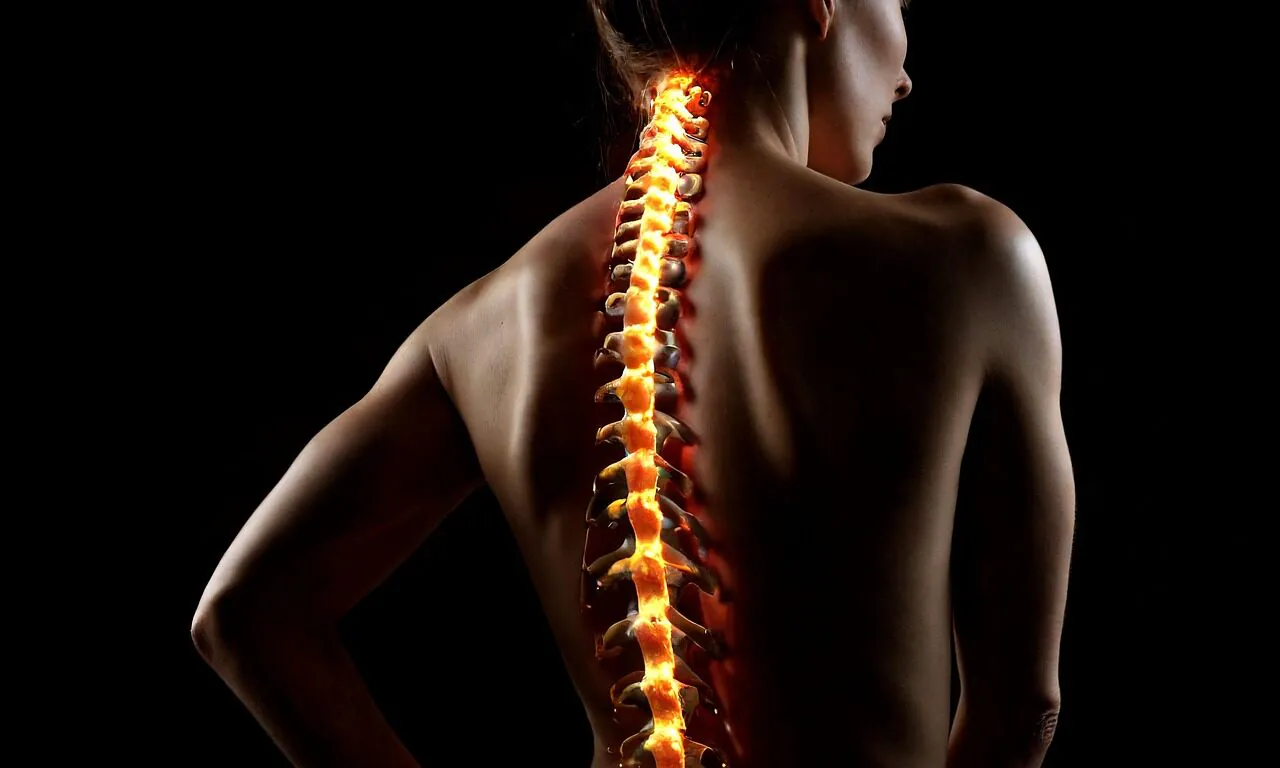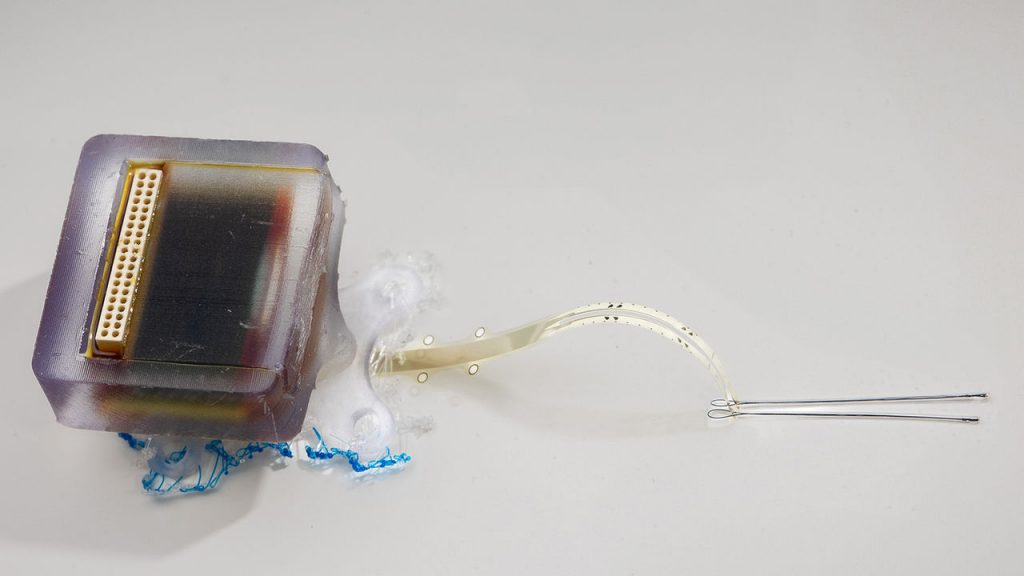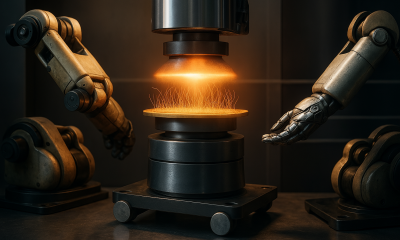HealthTech
New Spinal Cord Implants Show Hope for SCI Recovery

A team of engineers from the University of Auckland has demonstrated major progress towards creating an implantable electronic device designed to enable those suffering from spinal cord injury to recover functionality. The lightweight implant could revolutionize spinal injury treatment moving forward. Here’s what you need to know.
Spinal Cord Injuries
Your spinal cord is made from tubelike tissue that runs from the back of your skull down your vertebrae to your lower lumbar. It serves a vital role as the main highway for your nervous system and brain to communicate with the rest of your body. Specifically, it’s responsible for crucial tasks like reflexes and controlling your motion.
The critical role that your spinal cord plays in your biology can’t be overstated. As such, any damage to the spinal cord can result in several ailments, including neuropathic discomfort, loss of motor and sensory capabilities, uncontrollable bowels, and even sexual dysfunction.
According to recent studies, +15M people currently live with spinal cord injury (SCI) globally. These injuries range from discomfort to being unable to complete basic day-to-day tasks. Little things like using the bathroom or making lunch can become impossible for those suffering from SCIs. What’s worse is that there appears to be a trend edging towards more SCIs in the future. It’s estimated that an additional 200-500K people will suffer from SCIs this year.
Why Spinal Cord Injuries Are So Difficult to Cure
There are many aspects of SCIs that make them more difficult to deal with than other injuries. For one, the spinal cord doesn’t heal at the same pace as other body parts. Consequently, any damage done to it during your life could become permanent.
Researchers recognized long ago that creating a treatment that enabled the spinal cord to regenerate effectively would be a game changer. Given the severity of most SCIs, it’s understood that even minor upgrades to a patient’s functionalities translate into big wins in terms of quality of life.
Methods To Treat Spinal Cord Injuries
Researchers have attempted many different approaches in their search to discover an effective treatment for SCIs. One approach that has seen momentum is the use of low-frequency electric fields with changing polarity. Specifically, high-frequency neuromodulation pulses to the spinal cord have been found to help stimulate regeneration.
This treatment relies on electrodes that are implanted into the muscle located directly above the dura mater. This approach gained speed after researchers found success in non-human patients, including lampreys, guinea pigs, and dogs. This success led to the first human patients receiving the treatment.
How the Spine Forms
This treatment strategy works due to how electric fields help to shape early nervous system development. When your body begins to develop, electrical fields help the spinal cord follow its path from the brain stem to your lower back. Notably, these electrical pulses encourage tissue and nerve growth.
Problems with Current SCI Treatments
While the science of using electrical pulses to treat SCIs is still being researched, there have been some roadblocks to further adoption. For one, previous treatments relied on implanted electrical nodes. These nodes were made from metal that can corrode over time, reducing the treatment’s effectiveness and potentially leading to other complications.
Additionally, the placement of these electrodes could result in irregular readings, limiting the treatment’s capability to encourage long-term regeneration. Also, finding the right signal and strength to optimize low-frequency stimulation has been troubling due to signal degradation over time, due to corrosion issues.
Sadly, as the nodes begin to corrode, they can cause bodily harm, altering your PH and introducing metal by-products and ions into your body. Thankfully, a team of scientists has put forth a new approach that could help to solve many of these issues, helping millions who suffer from SCIs globally.
Spinal Cord Implants Study
A team of engineers from Waipapa Taumata Rau, University of Auckland, demonstrated a novel treatment method for SCI in the “Daily electric field treatment that improves functional outcomes after thoracic contusion spinal cord injury in rats” study.
This paper delves into the creation of an advanced ultra-thin-film device designed to be implanted under the dura mater. The implant uses supercapacitor electrodes and low frequencies to enhance bio-tolerability, making it easier to create long-term treatment strategies.

Source – University of Auckland
Designed to Not Impede Life
The engineers understood that their implant needed to be ultra-thin to comfortably remain in place. They started by reimagining the electrodes. They did away with the metal ones used in previous approaches. Instead, electrodes coated in sputtered iridium oxide films (SIROF) were used.
These electrodes were sized up to improve their capabilities as well. Notably, the electrodes are meant to be directly implanted on the spinal cord, where they can apply a small current to the injured site. Keenly, the researchers tried several approaches before deciding on this particular thin-film fabrication method and device.
Alternate the Polarity
The new spinal cord implant system applies an alternating charge every 15 minutes to the damaged tissue. This charge is set at ~0.5 mHz, enabling it to assist in axon outgrowth in both directions. Specifically, the device utilizes a 250-ms pulse width stimulation. Impressively, this pulse is much longer than traditional approaches and can operate without any die-back exposure from the electrodes.
Spinal Cord Implants Test
The scientist took 12 weeks to demonstrate the feasibility of their study. The testing phase involved implanting the device into lab rats. Rats are one of the few animals that can recover naturally from spinal cord injuries, making them an ideal starting point for this work.
The engineers conducted 4 weeks of treatment and then monitored the animals’ responses. At the end of the test, the rat’s spinal cord tissue was examined. Crucially, both treated and non-treated rats were tested to see exactly what enhancements to the healing process the new treatment provides.
Spinal Cord Implant Results
The results of the test were impressive. The engineers noted that the treatment safely restored movement to rats following severe spinal cord injuries. The animal began to show signs of recovery of both movement and sensation.
As part of the test, the rats’ paws were subjected to a small electrical current. The rats that had received the treatment recognized and could feel the electrical current in the test, reacting accordingly and pulling away. Impressively, they showed improved healing from week 1 of the testing versus non-treated rats.
The data suggest that the subdural stimulation enabled the subjects to regain hind limb function and touch sensitivity. Additionally, the approach didn’t inflame the spine like traditional approaches. They noted that the electrodes did diffuse into the surrounding tissue like their metal predecessors.
The team then studied the electrodes to see if they produced any harmful by-products or side effects after the implant. There was no contamination, meaning that this approach allows engineers to apply the treatment more frequently and with less risk. Lastly, the test results show that the treated rats showed improved performance on a variety of motor skill tests, alongside greater cell counts in motor-related brain regions.
Spinal Cord Implants Benefits
Many benefits could make spinal cord implants a game-changer. For one, there’s no effective long-term treatment for spinal cord injuries. This approach will open the door for further research into the long-term effects of electrostimulation on the body.
The new system offers patients longer stimulation periods. Specifically, the report notes that the new cathodes outperform their predecessor by 1000X, meaning that the treatment can deliver stronger doses without causing any harm to the patient.
Less Power
The engineers noted that the alternating polarity approach is energy efficient. It uses only a fraction of the energy that other implant-based treatments require. This low energy requirement means that the device can be powered by the body using piezoelectronics or other methods other than batteries.
Greater Penetration
Another major plus is that the larger electrodes provide deeper penetration of the EF within the spinal cord. The deeper the low-frequency signals can go, the more effective the body’s response. Impressively, the device improves electrical pulse penetration while lowering energy consumption.
Comfortable Design
One of the biggest benefits of this approach is that the implant doesn’t cause any discomfort in the wearer. The original approach utilized a much larger device that could become a nuisance to the wearer, creating potential risk of damage and more. The new approach, using ultra-thin devices, means that the unit can be worn without the patient noticing.
Safer Usage
The team was quick to point out how the new treatment is much safer than alternative methods. Specifically, the team documented far less inflammation in patients. There were no cases of spinal cord damage, and the treatment did not produce irreversible faradaic reactions at the electrode-tissue interface like its predecessors. Additionally, the body doesn’t create an immune response to the device.
Spinal Cord Implants Real-World Applications & Timeline:
There are many real-world applications for spinal cord implant technology. The obvious use case scenario is in helping the millions of people who suffer from SCIs around the world live a better life. This approach represents a monumental leap in effective treatment strategies.
Timeline
It could be 7-10 years before this technology begins to make its way into the medical field officially. There is still a lot of research that needs to be done on the long-term effects of the treatments. Additionally, the engineers will spend years getting approval from regulators due to the complexity of the treatment and the effects of any mishaps on patients.
Spinal Cord Implant Researchers
The Spinal Cord Implants study was put forth by engineers from the University of Auckland and Chalmers University of Technology in Sweden. The paper lists Dr. Bruce Harland as the lead researcher for the study. Additionally, he had support from Professor Darren Svirskis, Maria Asplund, and several other scientists from accredited universities.
Spinal Cord Implants Future
The future of this technology is bright. The team will now focus on taking what they have learned to create a reliable and accurate medical device. The device could one day benefit millions of people living with these life-changing spinal cord injuries. Additionally, the group will delve deeper into researching vital aspects of the treatment, like frequency, duration, and the use of medications in conjunction with the approach.
Investing in Health Sciences
The medical device manufacturing sector is a competitive industry that has several dominating players. These companies produce products designed to help those suffering from serious ailments. Their dedication to advancing scientific research and health makes these companies a favorite of investors. Here’s one firm leading the charge and helping to take treatments to the next level.
Tiziana Life Sciences (TLSA)
Tiziana Life Sciences (TLSA +7.38%) entered the market in 2013. This London-based biotech firm specializes in the research and development of treatments for neuroinflammatory and neurodegenerative diseases like MS, ALS, Alzheimer’s, and more. The company’s unique approach and technology have helped it to become a recognized name among spinal cord injury treatment providers.
Tiziana Life Sciences Ltd (TLSA +7.38%)
Notably, Tiziana Life Sciences is the only provider working on a fully human anti-CD3 mAb designed to help those suffering from neurological damage. The drug is currently in clinical development and showing signs of success, with studies scheduled for 2026. Consequently, there are many analysts who see TLSA as a stock with lots of upside potential.
Latest Tiziana Life Sciences (TLSA) Stock News and Developments
Saks Global CEO Marc Metrick steps down as retailer reportedly nears bankruptcy
Nasdaq, S&P 500 move lower as 2026 trading gets underway
Nasdaq ends Monday in the red in subdued post-holiday session
Tiziana Life Sciences submits annual safety report for intranasal foralumab to FDA
Tiziana Life Sciences begins dosing in Phase 2 Alzheimer's trial - ICYMI
Tiziana Life Sciences begins dosing in Phase 2 Alzheimer’s trial - ICYMI
Spinal Cord Implants Conclusion
Sadly, there isn’t a reliable and effective way to provide those suffering from SCIs with a path to recovery. In most instances, the damage is permanent. Thankfully, this latest study opens the door for future treatments that could allow these individuals to see a full recovery from their injuries without any major side effects. For this reason and many more, these engineers deserve a standing ovation for their hard work and dedication.
Learn about other cool medical breakthroughs here.
Studies Referenced:
1. Harland, B., Matter, L., Lopez, S. et al. Daily electric field treatment improves functional outcomes after thoracic contusion spinal cord injury in rats. Nat Commun 16, 5372 (2025). https://doi.org/10.1038/s41467-025-60332-0














